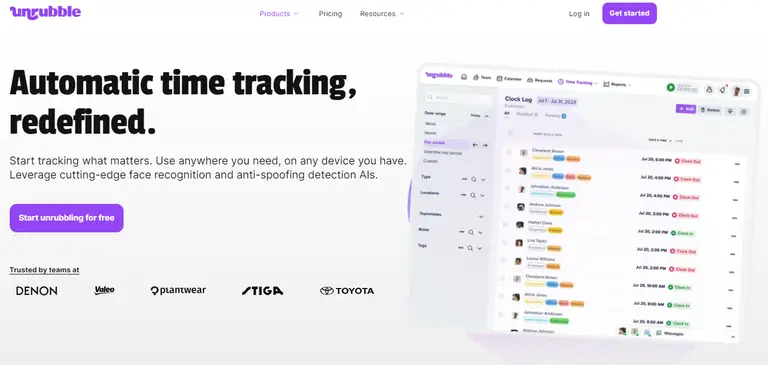Have you ever wondered if overtime is a blessing or a curse for employers? Do you think paying time and a half sounds like a simple solution?
Think again.
Overtime work might seem straightforward, but it can lead to a tangled web of costs and complications.
From calculating the hourly overtime rate to dealing with salaried employee exemptions, employers often face more headaches than benefits.
Is double time really worth the effort?
And what happens when overtime exceeds the permitted weekly hours?
Check the real impact of overtime on businesses, beyond the surface-level perks:
What is overtime in the workplace?
Overtime refers to hours worked beyond the standard 40-hour workweek, often compensated at a higher pay rate.
Is overtime... a good thing?
The concept of overtime pay has evolved a lot over time.
The Fair Labor Standards Act (FLSA) of 1938 was a landmark in labor law, establishing the right to a minimum wage and mandating overtime pay for hours worked over 40 in a week. This act aimed to protect workers from exploitation and allow for fair compensation for extra hours worked.

Initially, the standard workday was eight hours, but during the Industrial Revolution, employees often worked much longer hours with little to no additional pay.
The FLSA introduced the principle of "one and a half times" the employee's regular rate for overtime hours, commonly known as "time and a half."
This change incentivized employers to limit excessive work hours and hire more staff, promoting better work-life balance.
Over time, the definition of exempt and non-exempt employees also became key.
Exempt employees, typically salaried professionals, are not entitled to overtime pay, while non-exempt employees must be compensated for overtime hours worked.
Understanding these distinctions helps employers manage their workforce effectively and comply with legal standards.
The evolution of overtime provisions continues to shape labor practices and impacts how businesses operate today.
Real repercussions of overtime for employers

Increased labor costs due to higher rates of overtime pay
When employees work overtime, they must be paid at a higher rate of pay, typically one and a half times their regular hourly rate. This premium pay can increase labor costs for employers.
For instance, if an employee's regular rate is $20 per hour, their overtime rate would be $30 per hour, which can quickly add up during busy periods or in departments that frequently require additional hours.
Administrative burden of computing overtime
Employers face the challenge of accurately computing overtime for each pay period, especially in large companies with many employees.
This involves tracking hours worked, applying the correct overtime rates, and complying with labor laws. Errors in this process can lead to costly legal issues and back payments.
For example, salaried employees who are not properly classified may be subject to overtime pay, complicating payroll management.
Impact on employee well-being and productivity
While paid overtime can boost employee earnings, consistently working beyond the standard 40 hours can lead to burnout and reduced productivity. Employers must balance the need for extra work performed with providing adequate rest to employees.
Excessive overtime may result in higher absenteeism, lower job satisfaction, and increased turnover, ultimately affecting the company's performance and morale.
Legal risks and compliance issues with fair labor standards act
Failing to comply with overtime laws, such as the Fair Labor Standards Act (FLSA), can result in severe repercussions for employers.
Non-compliance can lead to legal proceedings, fines, and reputational damage. Employers must check if all eligible employees are paid overtime correctly and that exemptions are properly applied.
For example, misclassifying a non-exempt employee as exempt can lead to back wages and penalties.
How to keep an eye on overtime hours in your company

Set clear overtime policies
- Establish clear overtime policies to avoid confusion and comply with the Fair Labor Standards Act (FLSA).
- Define when overtime applies and the overtime rate for extra hours worked.
- Clarify that overtime pay is one and a half times the employee's regular rate of pay.
- Explain how overtime work must be approved by a supervisor to prevent unauthorized hours.
- Include guidelines on how to handle exceptions and the consequences for exceeding permitted hours.
Clear policies help employees understand their responsibilities and rights, reducing the risk of disputes and promoting fair compensation.
Use Unrubble for tracking hours

Unrubble makes tracking overtime hours easy. It automates calculations, guaranteeing accuracy and compliance with overtime laws.
Set alerts when employees approach 40 hours in a workweek to prevent unplanned overtime. Generate reports to monitor overtime pay and identify patterns.
Unrubble helps manage premium pay, so employees are paid one and a half times their rate for extra hours worked.
Keep your payroll accurate and employees happy with Unrubble's comprehensive tools. Try it out for free today.
Educate managers on overtime laws
Educate managers on the Fair Labor Standards Act (FLSA) and how it affects overtime.
Managers need to understand the difference between exempt and non-exempt employees, when overtime applies, and the required rate of pay. Non-exempt employees must be paid one and a half times their regular wage for overtime work.
Training managers on these rules helps prevent violations and promotes fair treatment of employees.
Knowledgeable managers can also help spot patterns of excessive overtime and take corrective actions, like adjusting workloads or hiring additional staff.
Encourage work-life balance

- Promote a healthy work-life balance to reduce the need for overtime.
- Encourage employees to complete their duties within regular hours and take breaks to avoid burnout.
- Offer flexible schedules to help employees manage their work and personal lives effectively. Fostering a balanced work environment reduces dependency on overtime, which helps control labor costs and maintains employee well-being.
Happy, well-rested employees are more productive and less likely to require overtime, benefiting both the company and its workforce.
Review and adjust workloads
- Regularly review workloads and adjust them to minimize overtime.
- Analyze which departments or employees consistently exceed their hours and consider redistributing tasks or hiring additional staff.
Addressing the root cause of overtime prevents excessive hours and the need for premium pay. Periodic reviews of workloads keep employees from being overburdened and help them complete work within the regular workweek.
Balancing workloads helps maintain productivity and morale, reducing the need for costly overtime payments and promoting a healthier work environment.
Conclusion
Effectively managing overtime is essential for employers to control labor costs, comply with laws, and take care of employees' well-being.
Through implementing clear policies, using tools like Unrubble, and monitoring work hours, businesses can navigate the complexities of overtime.
Now it's your turn to apply these strategies in your organization. Good luck!
FAQ
What does overtime mean?
Overtime means working more than the standard 40-hour workweek. Employees must be paid one and a half times their regular rate for these extra hours.
What is overtime work?
Overtime work refers to any hours worked beyond the fixed 40-hour workweek. Employers must pay for this additional work at a rate of one and a half times the employee's regular pay.
What is an example of overtime?
An example of overtime is an employee working 45 hours in a week. The employer must pay for those extra 5 hours at one-half times the regular pay rate.
How is overtime calculated?
Overtime is calculated by taking the hours worked beyond 40 in a week and multiplying it by one and a half times the regular pay rate. This ensures fair compensation for extra hours worked.








